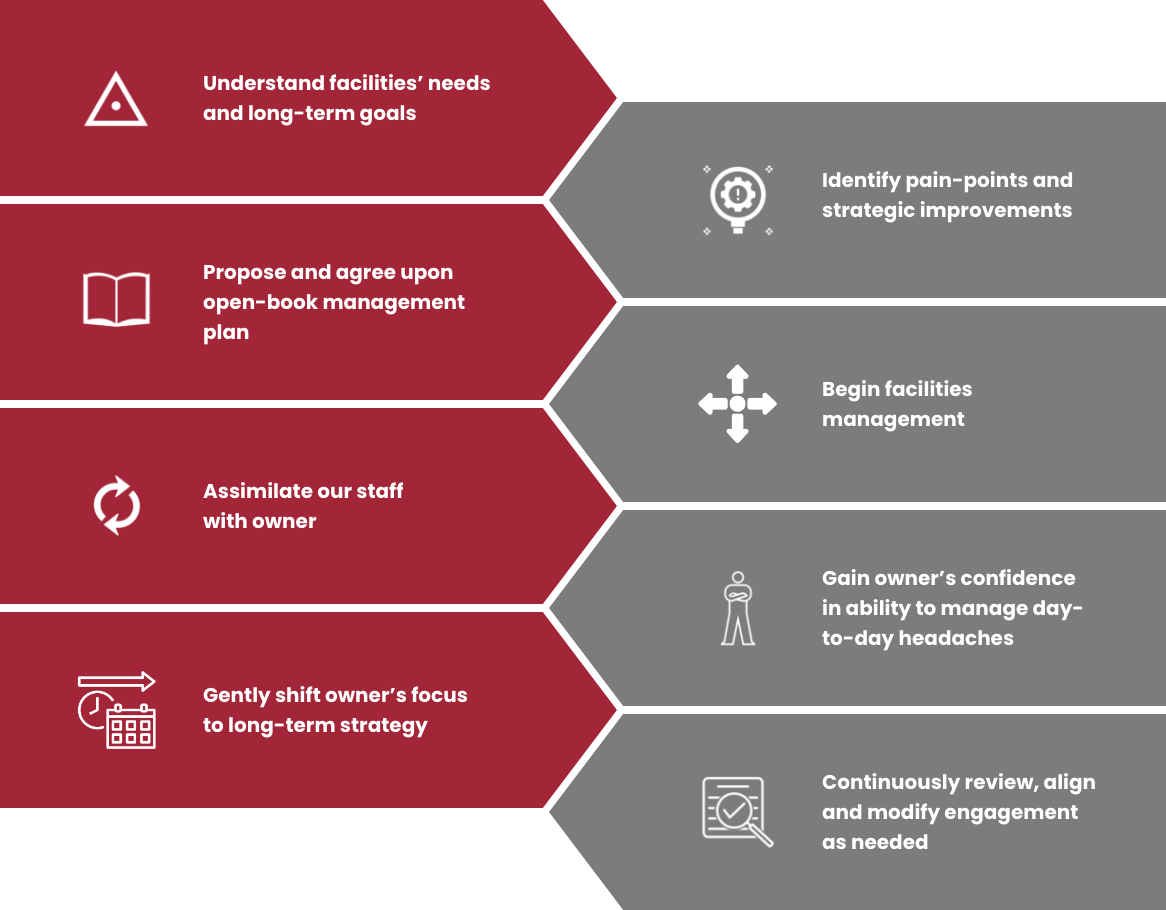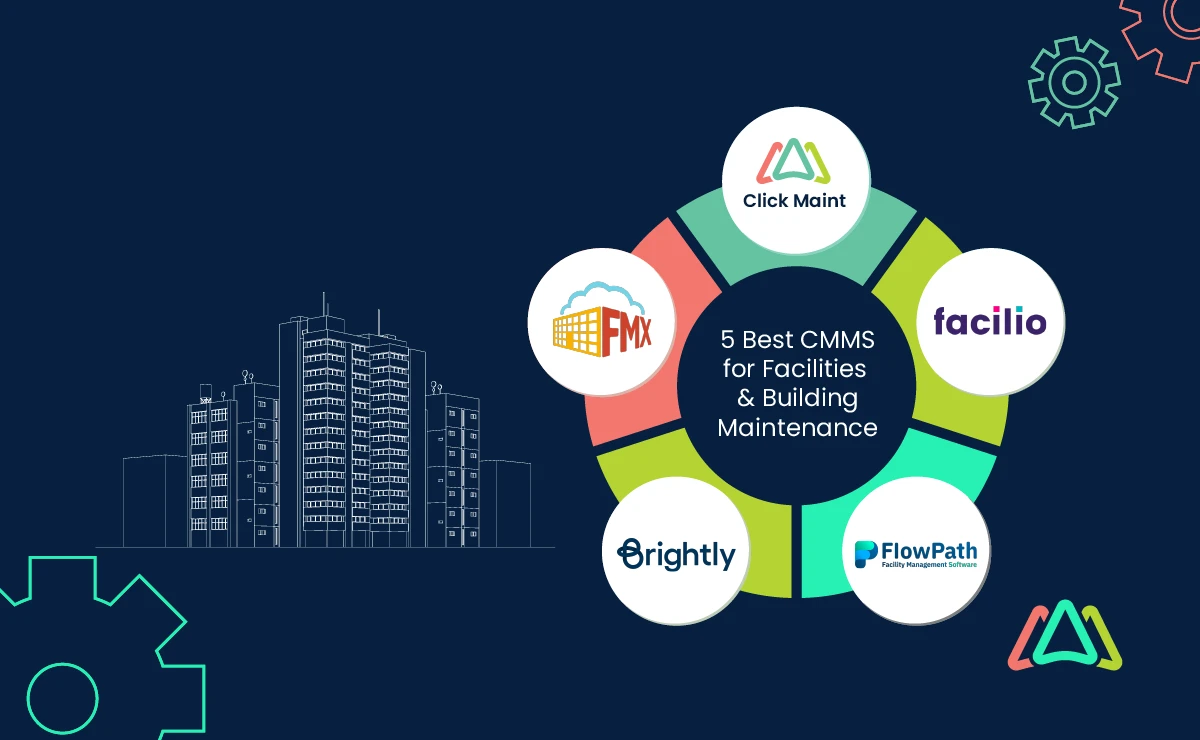The Duty of Facility Management in Sustainable Operations
The Duty of Facility Management in Sustainable Operations
Blog Article
Key Trends Forming the Future of Facility Management in 2024
As we look ahead to 2024, the landscape of center monitoring is poised for significant improvement, driven by a number of crucial patterns. The combination of clever structure technologies and a shift in the direction of data-driven decision-making promise to enhance functional effectiveness while focusing on sustainability in practice.
Smart Structure Technologies

Smart building technologies include a vast selection of systems, including smart lights, a/c controls, and protection systems. By integrating these systems, center supervisors can check and readjust specifications in real-time, bring about considerable decreases in power waste and functional prices. Clever sensing units can spot tenancy degrees and adjust illumination and temperature as necessary, making sure that energy is only made use of when needed.
Furthermore, these modern technologies assist in boosted information collection, allowing organizations to track usage patterns and identify possibilities for further renovations. The application of smart building innovations not only adds to sustainability goals but additionally creates healthier job environments that can enhance staff member efficiency and fulfillment.
As we relocate into 2024, the fostering of clever structure technologies will likely speed up, reflecting a more comprehensive change in the direction of even more intelligent, receptive, and sustainable facility administration techniques.
Data-Driven Choice Making
Increasingly, organizations are leveraging data-driven decision making to enhance center management practices. By utilizing data analytics, center supervisors can acquire workable understandings that dramatically improve functional performance and resource allowance. The assimilation of sophisticated technologies, such as IoT sensors and real-time tracking systems, allows the collection of substantial quantities of data on structure efficiency, occupancy rates, and energy usage.
This riches of info permits facility supervisors to determine fads, forecast maintenance requirements, and proactively address issues before they rise. Predictive analytics can forecast tools failings, decreasing downtime and repair service expenses. Furthermore, data visualization devices promote far better communication amongst stakeholders, ensuring that educated decisions are made collaboratively.
In addition, data-driven techniques enhance critical planning by allowing center managers to examine the effectiveness of current techniques and make educated options regarding financial investments in technology or framework. As organizations progressively prioritize functional quality, data-driven choice making is poised to become a cornerstone of successful facility monitoring strategies in 2024 and past. Ultimately, the capacity to utilize data effectively will empower organizations to create much more effective, effective, and resistant centers.
Sustainability and Green Practices
The emphasis on data-driven choice making naturally straightens with the expanding emphasis on sustainability and green methods within facility monitoring. As companies increasingly focus on ecological responsibility, center managers are leveraging analytics to maximize resource usage, decrease waste, and reduce carbon impacts. This critical approach makes it possible for the assimilation of energy-efficient systems, such as LED lighting, clever a/c controls, and eco-friendly energy resources right into facility operations.
Moreover, the execution of lasting techniques extends beyond energy intake. Facility managers are promoting and taking on green products reusing initiatives to produce a round economy within their facilities. This not only improves the environmental account of the organization yet also promotes a society of sustainability among employees.
Conformity with environmental policies is another essential aspect driving the fostering of green methods. By using data analytics, center managers can monitor conformity metrics and identify locations for renovation, guaranteeing adherence to local and global sustainability criteria.
Hybrid Job Designs
A significant change towards crossbreed job versions is reshaping the landscape of facility administration in 2024. This paradigm integrates remote and in-office work, necessitating a reevaluation of room usage, source allocation, and employee involvement techniques. Organizations are progressively identifying the significance of flexible workspaces that accommodate varied requirements and preferences.
Facility managers need to adjust by applying functional workplace designs that sustain collaborative initiatives while giving areas for focused work. This includes read this post here the combination of technology to assist in smooth interaction and partnership among remote and in-office employees. Smart structure services, equipped with sensing units and analytics, permit real-time tracking of space use, enabling organizations to optimize their environments successfully.
Additionally, crossbreed work models stress the requirement for effective More Help center management that prioritizes worker experience. This includes not just technology and area style but likewise the development of policies that promote a well balanced work-life dynamic. As companies browse this transition, the function of facility administration becomes pivotal in creating a dexterous office that cultivates performance and drives organizational success. Fundamentally, the hybrid work model is transforming center administration, motivating a proactive strategy to fulfill the evolving demands of the workforce.
Enhanced Resident Health
As companies embrace hybrid job models, a heightened concentrate on passenger wellness is coming to be integral to center management techniques. Facility Management. This change identifies that a satisfied and healthy workforce directly influences productivity and retention prices. Center supervisors are currently focusing on settings that promote physical and mental well-being, incorporating aspects such as all-natural illumination, biophilic design, and easily accessible wellness sources

Modern technology plays an essential duty in this advancement. Smart structure systems can keep an eye on environmental variables and adjust setups in real-time, making certain ideal convenience degrees - Facility Management. Additionally, feedback mechanisms, such as occupancy sensing units and worker surveys, enable news center supervisors to continually refine wellness campaigns based upon resident demands.

Conclusion
In 2024, the future of facility management will certainly be dramatically affected by the assimilation of smart structure innovations and data-driven decision-making, fostering boosted operational performance. These trends jointly highlight the progressing landscape of center management in action to contemporary obstacles and chances.
Facility managers are taking on green products and promoting reusing initiatives to create a round economic climate within their centers.A significant change towards crossbreed work versions is improving the landscape of facility monitoring in 2024.Moreover, crossbreed work designs stress the requirement for effective center monitoring that focuses on employee experience.As companies accept hybrid job designs, an increased focus on passenger wellness is becoming integral to center management strategies.In 2024, the future of center management will be considerably influenced by the assimilation of clever structure technologies and data-driven decision-making, cultivating improved operational effectiveness.
Report this page